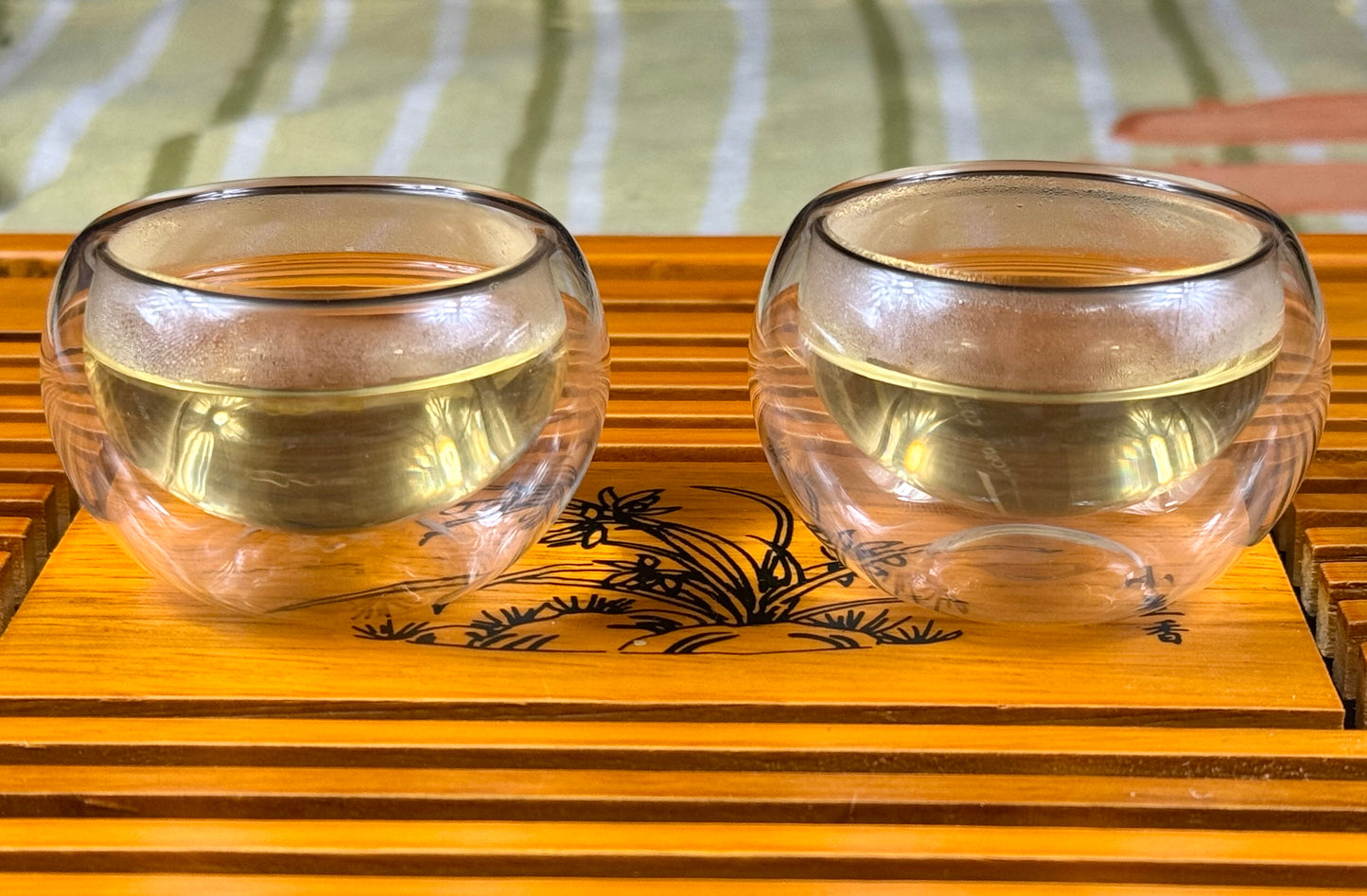Long Jing / Dragon Well Premium Green Tea
Long Jing / Dragon Well Premium Green Tea
Couldn't load pickup availability
Long Jing – Dragon Well Green Tea (龙井)
China’s Most Famous Green Tea from Hangzhou, Zhejiang
Pan-Fired • Fragrant and Flat
A tea of balance, elegance, and enduring fame.
Long Jing (龙井), or “Dragon Well,” is China’s most celebrated green tea, originating from the lush hillsides surrounding West Lake (西湖) in Hangzhou, Zhejiang Province. Hand-picked and pan-fired by artisans, its flat, spear-shaped leaves produce a cup that is fresh, nutty, and subtly sweet, with an enduring fragrance and silky mouthfeel.
Harvested in early spring—especially Pre-Qingming (明前)—Long Jing is a tea of clarity and grace, with a clean vegetal body and notes of orchid, chestnut, and tender bean sprout.
If you'd like to know what drinking this tea is like, you can read this: Long Jing - The Aroma of Fresh Rain and Springtime.
Why You’ll Love Long Jing (Dragon Well)
- One of the Top Ten Famous Teas of China
- Signature flat leaf shape – pressed by hand in a wok
- Elegant flavor with no bitterness
- Rich in tradition, craftsmanship, and spring vitality
Tasting Notes
• Fresh green bean, orchid, and chestnut
• Silky mouthfeel with light umami and floral uplift
• Sweet vegetal clarity and soft minerality
• Lasting finish with calm, cleansing energy
Tea Profile
• Type: Green Tea (绿茶)
• Cultivar: Long Jing #43 or local heirloom variety (specify if needed)
• Origin: West Lake Region, Hangzhou, Zhejiang Province, China
• Elevation: 300–800 meters
• Harvest: Early spring (Pre-Qingming preferred)
• Craftsmanship: Hand-plucked, pan-fired, and pressed flat
• Appearance: Flat, jade-green leaf spears; golden-green liquor
• Collected: 2025
Processing
Long Jing is one of the most labor-intensive green teas, prized for its hand-pressed flat leaf form and wok-fired clarity:
- Plucking – One bud with one or two leaves
- Withering – Brief indoor withering to remove moisture
- Pan-Firing (Shaqing) – In a wok, by hand, to fix enzymes
- Pressing & Drying – Leaves are pressed flat during firing, giving their iconic sword-like shape
The result is a tea of elegance and harmony, full of natural sweetness and fragrance.
More about Long Jing and its production.
Health Benefits
• High in catechins, amino acids, and chlorophyll
• Boosts alertness and mental clarity
• Gently detoxifying and cooling
• Supports digestion and light energy
• Ideal for morning calm or early afternoon focus
Brewing Instructions
Gongfu Method (5 oz / 150 ml)
- Tea amount: 5-7 grams
- Water temperature: 75–80°C / 167–176°F
- Rinse: Not necessary
- Infusions:
- 1st: 30–40 sec
- 2nd: 40–50 sec
- 3rd: Increase time slightly
- Tip: Use porcelain or glass to enjoy the leaf form and rising fragrance
Cup Method (8.8 oz / 250 ml)
- Tea amount: Adjust based on personal preference for tea strength.
- Water temperature: 75°C / 167°F
- Steep time: 1.5–2 minutes
- Re-steep: 2–3 times
- Note: Add water gently along the side to avoid damaging the leaves
Cultural Significance
Long Jing has been esteemed for over a thousand years, favored by emperors, poets, and scholars alike. During the Qing Dynasty, it was elevated to Imperial Tribute Tea (贡茶) status. Today, it is a symbol of Chinese tea culture—representing purity, grace, and scholarly calm.
Named after a legendary dragon-shaped well, Long Jing brings the taste of spring mountain air and still reflection into every cup.
Share








This is one of my and my friends favourite tea. The tea is very refreshing for summer.
We love Long Jing supreme even more unfortunately it was out of stock looking forward to get more soon.
Very smooth and takes well to multiple infusions. I recently spent a calm and focused afternoon with this tea--I absolutely recommend it!
Rich flavor and numerous health benefits! Indulge in a moment of serenity while savoring a cup of this exquisite Long Jing. Thank you.








